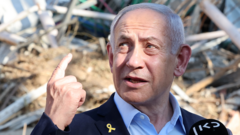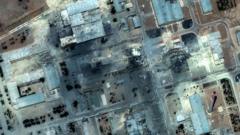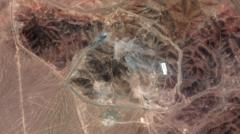The U.S. has removed a significant portion of a migrant camp at Guantanamo Bay, initially set up following President Trump's order to accommodate 30,000 migrants. While officials describe this as a resource adjustment, critiques emerge around the camp's impact, spending, and operational goals amidst ongoing immigration debates.
Dismantling of Migrant Tents at Guantanamo Bay: Evaluating the Implications

Dismantling of Migrant Tents at Guantanamo Bay: Evaluating the Implications
Recent satellite imagery reveals that the U.S. has begun dismantling a migrant camp at Guantanamo Bay, which was constructed under the Trump administration, highlighting the complex nature of immigration policies.
Satellite images indicate the extensive dismantling of the migrant camp at Guantanamo Bay, as about 175 out of roughly 260 military tents have been removed as of mid-April. This development comes months after the camp's construction was ordered by then-President Donald Trump, who envisioned the facility expanding significantly to house 30,000 migrants. Despite the ambitious plan, the actual number of migrants detained at the base has been considerably less, with around 400 reportedly sent to the facility, many returning to U.S. holdings or deported shortly thereafter.
Official commentary describes the removal of tents as an "efficient use of resources" rather than a signal of reduced readiness. This adjustment is indicative of changing resource allocation strategies within the Department of Defense, amidst an overarching narrative of a declining migrant population under Trump's policies. Although the initiative sought to address national security concerns related to undocumented immigrants, critics, including a delegation of Democratic senators who recently visited the base, have condemned the financial expense and perceived misuse of military resources for detention purposes.
It's reported that maintaining operations at the migrant camp has cost the Pentagon roughly $38 million in just its initial month. The funds allocated are raising questions among lawmakers about whether such expenditures align with effective border management strategies or merely serve political narratives. As public scrutiny of immigration policy continues to evolve, the future status of the Guantanamo Bay facility remains uncertain, particularly whether it will align with previous intentions or undergo significant re-evaluation moving forward.






















